
Bulk Chemicals
Simulate space-dependent continuous stirred mixers and tank reactors for high flow rates.
深入理解化工过程并优化设计
仿真是科研人员、开发人员和工程师理解化工反应系统中的过程、现象和设计的强大工具。“化学反应工程模块”是 COMSOL Multiphysics® 软件平台的一款附加产品,为用户提供了直观的界面,用于创建、检查和编辑化学方程、动力学表达式、热力学函数和输运方程。一旦模型通过了实验数据的验证,就可以用来研究不同的工作条件和反应系统的设计,以及相应的传输现象。通过分析使用不同输入数据求解的结果,可以帮助用户理解所研究系统的工作原理。将“化学反应工程模块”与 COMSOL Multiphysics® 中的其他工具结合使用,还可以基于先进算法来优化化工系统的性能和参数。
联系 COMSOL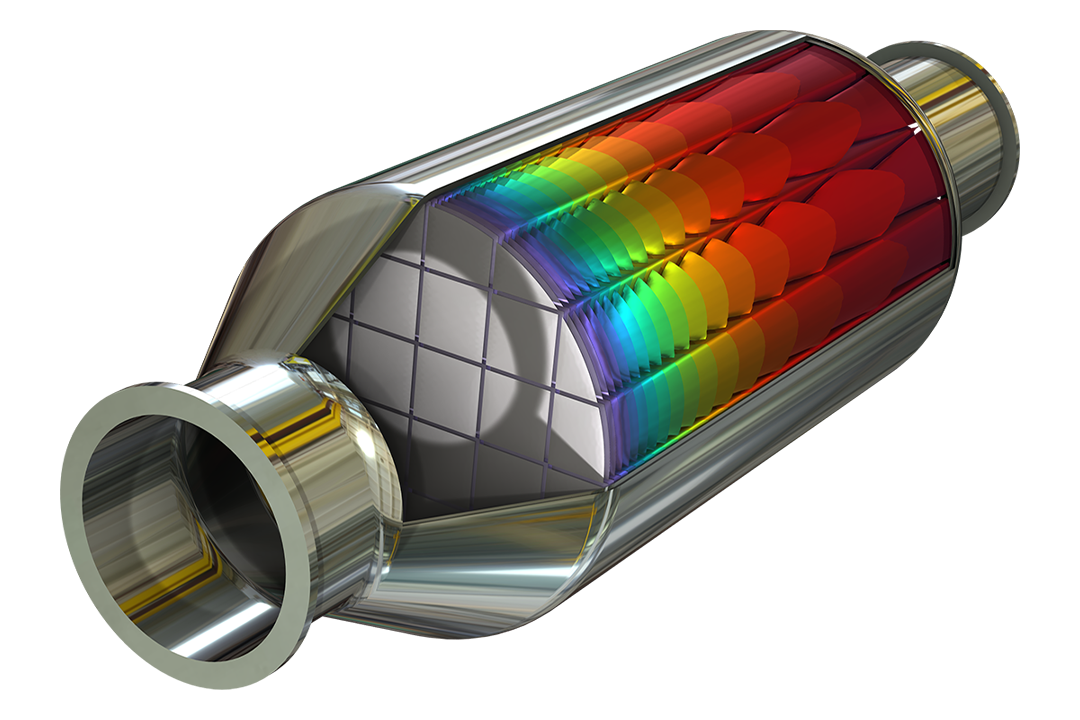
使用 COMSOL® 软件模拟各种工业过程中的传递现象和化学反应。

Simulate space-dependent continuous stirred mixers and tank reactors for high flow rates.

Study reaction kinetics and mass transport to design processes for the fine chemicals industry, such as extraction and distillation processes.

Optimize designs and processes for biotech and pharmaceutical applications by modeling the transport and reactions of drugs in tissue and across membranes.
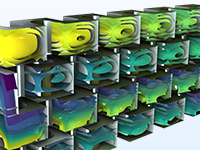
Investigate heat transfer and reactions during pasteurization or study other processes in the food industry, such as drying, cooking, and fermentation.

Model catalyst deactivation and pressure losses in packed bed reactors.
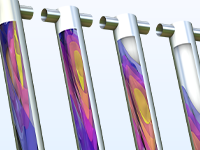
Investigate the elimination of pollutants in effluent streams using separation processes such as adsorption, membrane filtration, and crystallization.
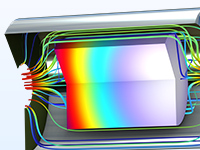
Study the rate of chemical vapor deposition (CVD) as a function of fluid flow and reaction kinetics in a CVD boat reactor.
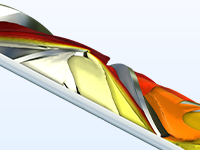
Design static mixers for laminar flow —such as mixers for epoxies, silicones, and acrylic resins — that achieve the desired emulsion properties.
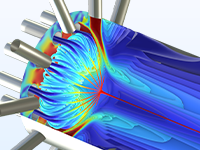
Study different aspects of polymer production processes, such as the dissolution of reactants, polymerization reactions, curing reactions, and filtration of the product stream.

Investigate optimal process conditions and reactor design for the production of fertilizers, pesticides, and herbicides.
“化学反应工程模块”提供内置的工作流程:在零维中分析完全混合的系统,在二维和三维中仿真传输现象
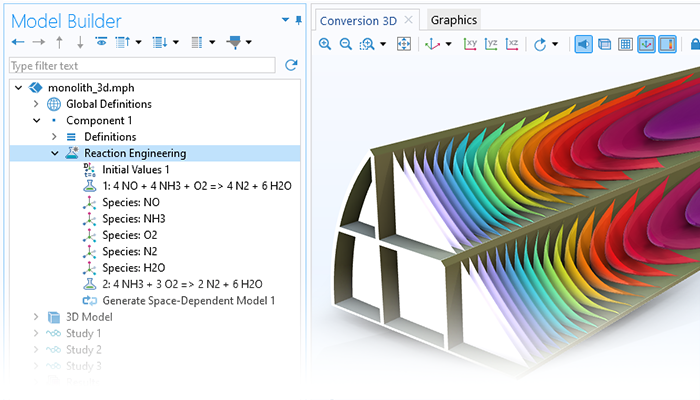
在分析任何系统时,首先需要建立质量平衡。借助反应工程 接口,用户可以输入化学方程来自动获取系统中化学物质的质量平衡和能量平衡方程。当输入反应机理时,软件会根据质量分数来自动确定动力学表达式随物质浓度变化的函数。用户也可以输入自定义解析式,以描述反应速率随物质浓度和温度的变化。
软件可以根据质量平衡和反应动力学表达式给出常微分方程。对于完全混合的间歇式反应釜,仿真结果将展示反应混合物的组成随时间的变化情况。
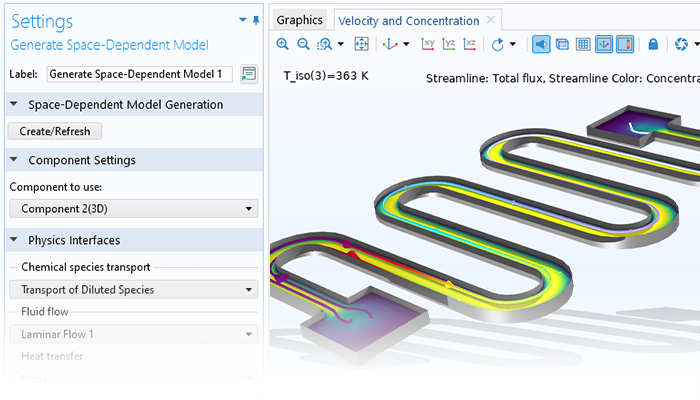
一旦创建了完全混合系统的模型,就可以利用它来自动定义空间相关系统的质量、能量和动量平衡。在反应工程 接口中计算的传递属性(例如热容、导热系数、黏度和二元扩散系数)会自动转移到化学物质传递、传热和流体流动物理场接口。借助这一功能,用户可以在转向二维、二维轴对称和三维模型之前,优化和完善化学反应的动力学和热力学表达式。
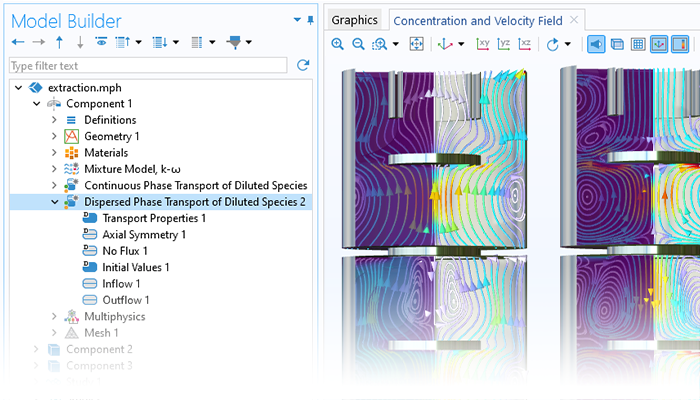
在对反应系统中的传递现象进行仿真时,需要准确描述化学物质在多组分传递模型 中的行为。“化学反应工程模块”的浓物质传递 接口中包含复杂的多组分传递模型,用户可以在 Maxwell-Stefan 公式与多组分传递的混合平均模型之间进行选择。对于稀溶液,还可以选择稀物质传递 接口来处理溶液中以溶质-溶剂相互作用为主导的情况。含物质传递的分散两相流 接口可用于描述两个不混溶液相之间的化学物质传递。化学物质输运方程还可用于多孔介质,例如,用来包含克努森扩散的情况。此外,本模块还内置了含尘气体扩散模型,以满足更广泛的需求。通过反应工程 接口生成与空间相关的模型时,可以直接根据化学方程得到质量平衡模型的公式和传递属性,从而简化建模过程。
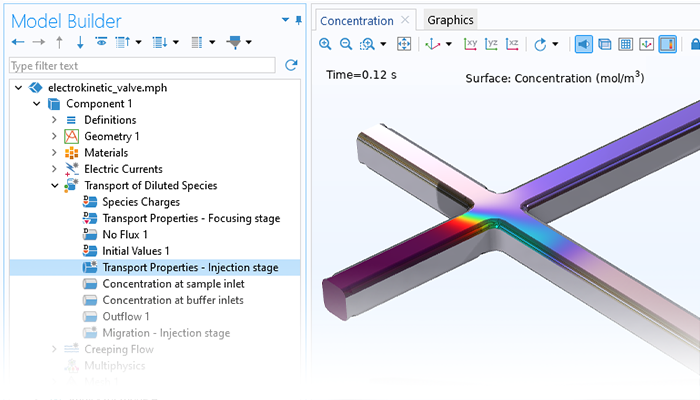
对于稀物质传递或浓物质传递,电场可以作为驱动力来驱动电解质和离子在溶液中的运动。软件提供了专用于电解质建模的 Nernst-Planck 和电泳输送 接口,可以包含泊松方程的公式或电解质中电荷平衡的电中性条件。这项功能的应用范围广泛,涵盖电动阀、电渗流和电泳等领域。
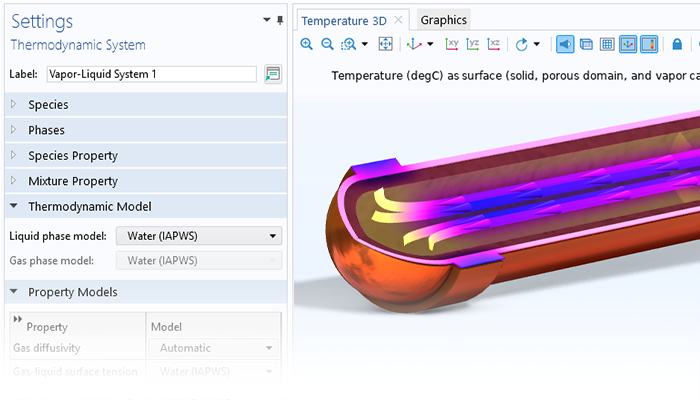
“化学反应工程模块”提供了一个全面的热力学属性数据库,可用于计算气体混合物、液体混合物、平衡态气-液系统(闪蒸计算)、液-液系统以及平衡态气-液-液等系统。数据库提供了多种热力学模型用来精确计算混合物的密度、热容、生成焓、反应焓、黏度、导热系数、二元扩散系数、活度和逸度等材料属性。如需更多信息,请访问气液属性模块页面,“化学反应工程模块”中包含了气液属性模块的所有功能。
利用热力学属性数据库,用户可以选择特定反应系统中存在的化学物质、所需的属性以及热力学模型,创建适用于该系统的属性包。在定义反应机理时,可以将反应物和产物与热力学属性数据库中定义的属性包中的化学物质进行匹配,自动将属性包生成的函数和方程与反应系统模型联系起来。

在化学反应和反应机理的研究中,准确估计频率因子、活化能以及其他能够定量描述实验观察结果的参数至关重要。“化学反应工程模块”可以与优化模块结合使用,以访问化学动力学专用接口。
对于任何假定的反应机理,典型的模型参数估计工作流程如下:首先,选择要估计的模型参数(如速率常数),并输入其初始值和比例。随后可以将其链接到包含实验数据的文件,使数据列与模型变量相匹配。在运行参数估计后,可以通过后处理将模型结果与实验测量数据进行比较。
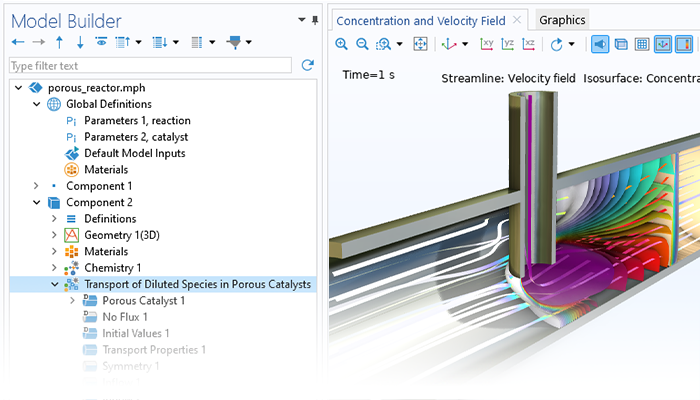
“化学反应工程模块”提供了强大的流体流动功能,可以处理层流和多孔介质流动现象。此外,通过与 CFD 模块耦合使用,还可以使用现成的耦合功能,对湍流中的化学物质传递进行仿真。通过反应工程 接口生成与空间相关的模型时,可以直接根据化学方程得到流体流动模型的公式、黏度和密度等重要参数。
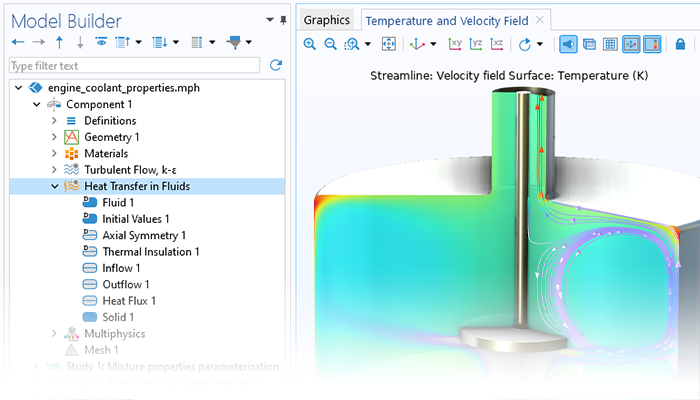
“化学反应工程模块”中包含的传热功能可以分析传导传热、对流传热和辐射传热。辐射项可以通过“表面对环境辐射”来获取,而“表面对表面辐射”和“参与介质中的辐射”则需要使用传热模块进行详细分析。“化学反应工程模块”的传热功能覆盖了流体传热、固体传热和多孔介质传热。当使用反应工程 接口生成与空间相关的模型时,用户可以直接根据化学方程得到传热模型的公式,并获取相关的热力学和传递属性。
多相催化和表面沉积过程(例如化学气相沉积)经常涉及表面反应,举例来说,生产氨的哈伯-博施工艺,以及用于检测极少量示踪剂的微传感器(这些示踪剂可以吸附在表面上,并通过电属性的变化等方式进行检测)等化学品分装工业及制品中,都存在这种现象。
在传递-反应模型中,可以将表面反应作为与本体中的传递和反应方程的边界条件相耦合的边界方程,这在微观尺度以下的模型中非常典型。而在多孔介质中,对这些反应的处理方式类似于均相反应,但需要考虑比表面积(多孔材料单位体积的面积)和有效传递属性。这种情况常见于微观尺度和宏观尺度的模型,也就是多尺度模型。
“化学反应工程模块”针对两种情况提供了多相催化的现成公式:边界面上的表面反应以及分布在均质多孔催化剂上的表面反应。对于多孔催化剂,提供了预定义的多尺度模型来描述具有双峰孔隙结构的催化剂,这种结构可以包含填充形成大孔颗粒床的微孔颗粒。
COMSOL 是否能用于解决我的问题?
欢迎联系我们,我们的专业工程师可以协助您评估技术可行性,并根据使用场景推荐许可形式。
点击右侧的“联系 COMSOL”按钮,填写并提交信息,我们的工作人员将会尽快与您联系。
评估与试用 COMSOL® 软件